Adorable, cute, and boundless balls of energy, there are few things more charming and heartwarming than welcoming an excitable new puppy into your family. But while their first day might be filled with naps and playtime, getting them to sleep through the night on their own puppy sleep schedule can often prove tricky.
Whether it’s a sudden onset of the zoomies at 3 am, or separation anxiety from no longer having their mother or litter to comfort them if they wake suddenly, getting your puppy to settle down in the evening might initially seem like a thankless and unending task.
Fortunately, with a bit of time, patience, and the right puppy sleep training plan, you’ll have your pup snoring softly until the late hours of the morning in no time at all!
From top tips on how long a puppy should sleep to advice on how to get a puppy to sleep at night without crying, keep reading to learn everything there is to know about setting up a puppy sleep schedule.
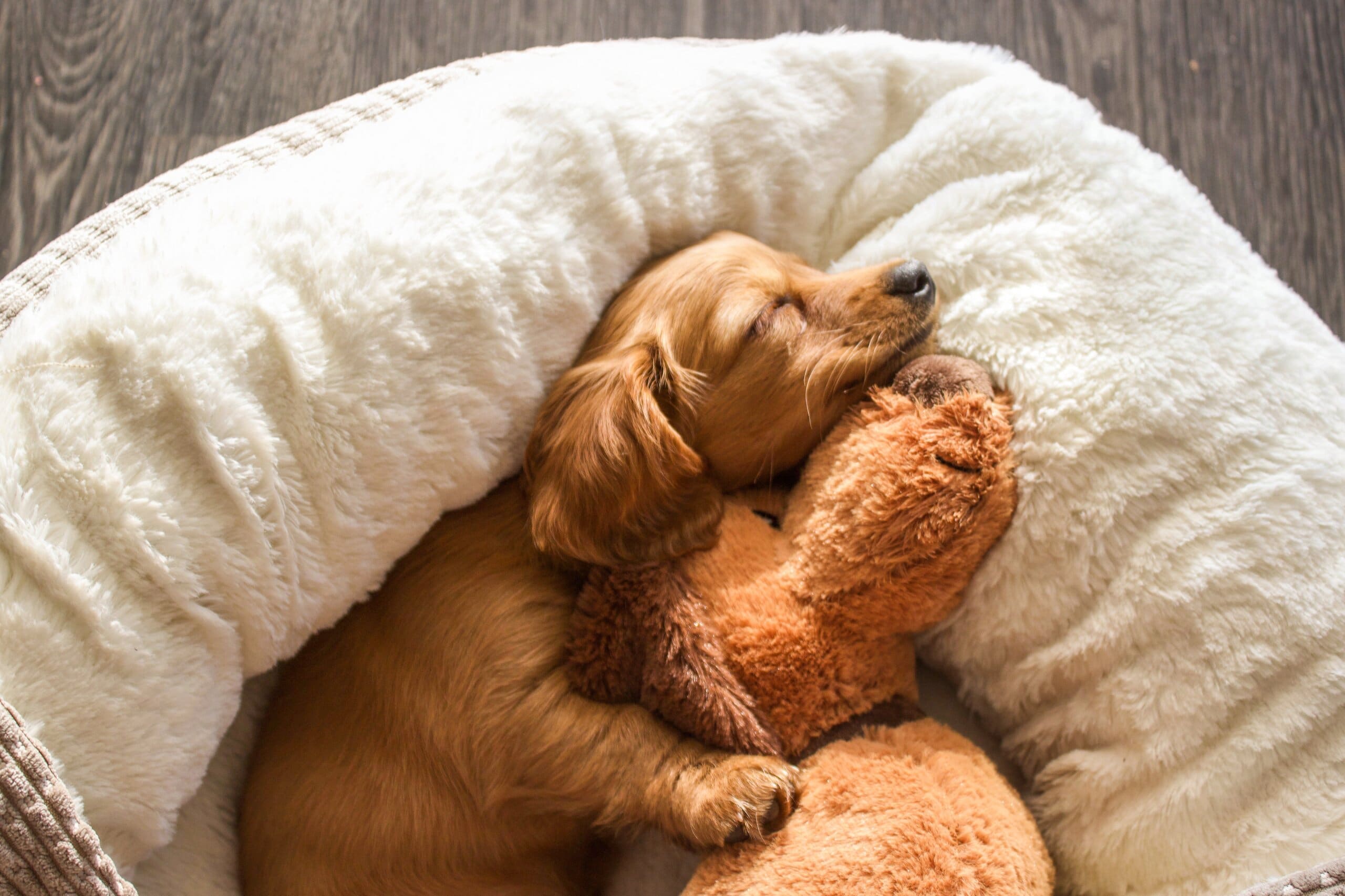
Is it normal for my puppy not to sleep through the night?
Before touching on our puppy sleep training tips, let’s answer one very important question first – yes, it’s entirely normal and expected for any new puppy to struggle sleeping through the night when they first move into their new home.
Simply put, moving away from their mother and into an unusual environment filled with strange sights, smells, and sounds is incredibly stressful for a puppy. It’s different from anything they’ve ever experienced before, so it’s only natural that your future best four-legged friend is going to be nervous about going to bed on the first few nights.
Of course, it’s not just stress that may cause your puppy to wake up in the night. Much like babies, puppies need potty training, and at first, their bladder won’t be strong enough to hold it in all night – so it’s inevitable that you’ll have to take them outside to go to the toilet in the early hours of the morning.
At the end of the day, this sort of behaviour comes with the territory of owning a puppy, which is why focusing early on puppy sleep training is one of the best ways to ensure you get a restful (at least uninterrupted) night’s sleep.
How much sleep does a puppy need?
You may be shocked to hear, but young pups often need upwards of sixteen to twenty hours of sleep per day – it’s why you’ll often catch them consistently napping after walkies or playtime! Our guide to why dogs sleep so much will explain further.
It’s also why it’s so important to get set napping times in place so that your puppy isn’t overly tired or wide awake when it comes to their actual bedtime. Because, contrary to popular belief, an overly tired puppy won’t necessarily be a sleepy one when bedtime comes around if they’ve been allowed to nap later in the evening.
Tips on how to get a puppy to sleep through the night
When it comes to tips on how to get a puppy to sleep through the night, there’s only so much puppy sleep training you can do to make your new family member feel as comfortable and safe in their new surroundings as possible.
But, with that being said, the following tips are tried and tested techniques for helping your puppy settle into their new home:
1. Start crate training early
First things first, when training your puppy to sleep at night, you’ll want to introduce crate training as soon as possible, which essentially teaches your new pup that their crate is a safe space that’s perfect for naps and nighttime sleep.
You can start doing this by selecting a reasonably spacious crate and placing it in or near your bedroom to help minimise nerves and separation anxiety, and in an area that’s quiet so they won’t be disturbed.
Naturally, you can experiment with exactly where you want your puppy to sleep in the first few days, but once a spot is picked don’t change it as it may disrupt the sleep schedule you’re trying to build.
From here, every time your puppy falls asleep or starts looking for a place to nap, place them in the crate. This will get them used to waking up and going to bed in it, helping them to quickly associate their crate with bedtime.
As an aside, when it comes to picking your dog’s crate, we’d highly recommend one that creates a den-like atmosphere and is coverable – either with a fitted cover or spare blankets – as this helps to simulate the typical sleeping spaces that dogs instinctively like to seek out.
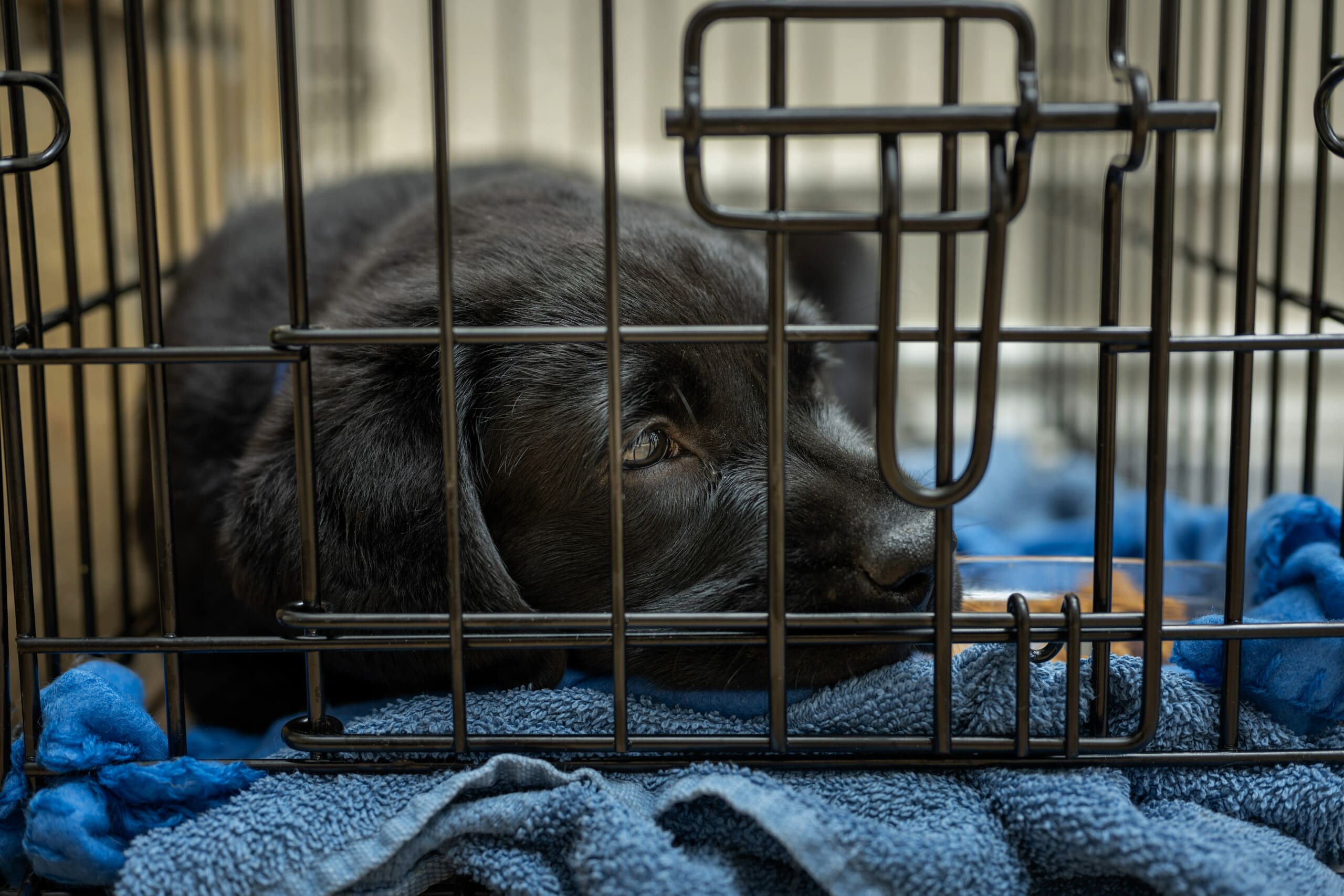
2. Create a comfortable sleeping space
Once you've settled on where you want to place your puppy’s crate, the next step is to turn said cage into a comfortable and cosy sleeping spot that your puppy will love spending time in.
Start by padding the base of your cage out with a few blankets you don’t mind getting chewed up, and then throw in a couple of chew toys for self-soothing alongside a snuggly toy that they can sleep with.
Alongside this, you’ll also want to make sure that whatever room they’re sleeping in is dark and quiet. Much like us, our dogs like to be comfortable when they settle down for the night, and anything with a bright screen is going to prevent them from doing this.
However, it should be noted that not all dogs enjoy voluptuous cushions and soft blankets. It’s just as common for them to prefer a floor or a single supportive blanket in a corner, so pay attention to how they prefer to sleep and adjust their cage to match so they can get the most sleep possible.
Now, with that being said, there is no guarantee that setting up the perfect sleeping spot will keep your new puppy asleep for the whole night, and a particularly nervous or rebellious young pup might actively leave their cage to find you during the night.
That’s why including a dog toy or blanket with their mum’s scent on can be a great way to introduce a sense of familiarity to their cage, helping them to feel at ease in the new surroundings.
3. Try co-sleeping with your puppy
Being sociable creatures, dogs naturally want to sleep close to their family for that added sense of comfort and safety, something that co-sleeping aims to recreate without actually having your puppy share your bed with you - although there are many benefits of having your dog sleep in your bed!
If you don't want your puppy in your bed, simply move your dog’s bed close to your own and have their leash attached to the leg of the bed nearest to you with plenty of slack. This will allow your dog to get up and move about should they wake up, but ensures you’re close enough to comfort them should they start whining.
Then, over the coming days and weeks, fractionally move their bed away from your own and into the space you eventually want them to sleep to minimise the potential for separation anxiety to develop, as the movements will be so minimal that your dog won’t register the change in distance.
4. Burn off the zoomies before bed
If there’s one thing that goes hand in hand with owning a dog, it’s putting up with sudden bursts of zoomies at random points in the day that cause them to go sprinting around the room for several solid minutes.
The zoomies are caused by a build-up of excess energy, and while it’s an entirely natural occurrence, such a burst before bedtime can entirely disrupt your puppy’s sleeping schedule, which makes plenty of exercise and mental stimulation before bed an absolute must.
Just 10-20 minutes of play once or twice before they turn in for the night will likely be enough to tire your puppy out, while also giving them important exercise. Not only that, but it will make them more likely to go to the toilet before bed, so they may not get up to clear their system until the earlier hours of the morning.
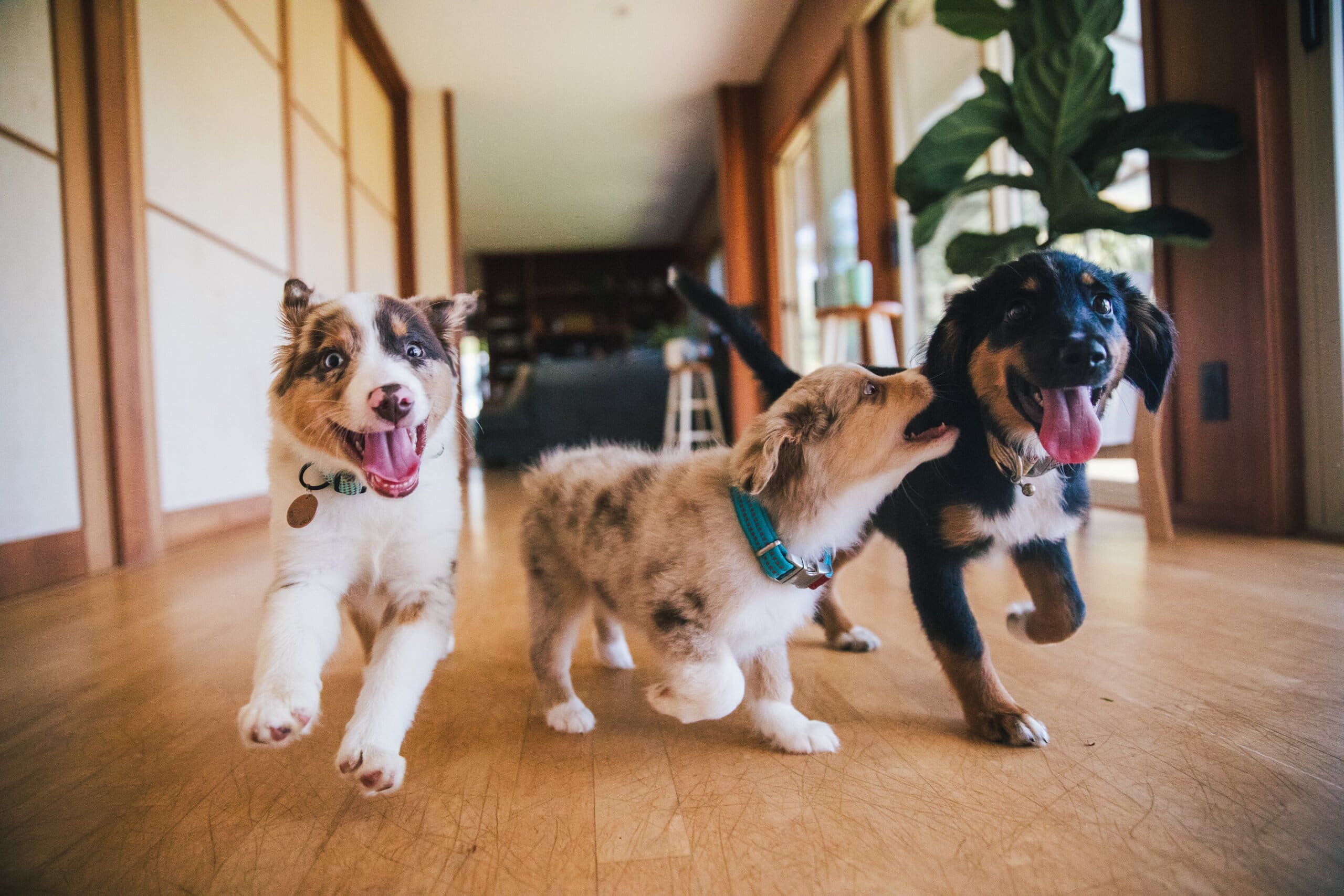
5. Give your pup some mental stimulation
Just as important for your puppy as physical exercise, giving them some mental stimulation in the evening is another effective way to tire your little friend out so that go to bed on time.
This can be done through either short spans of training exercise, or by using puzzle feeders when they’re nudging you for their final evening snack, both of which engage their brains on an important level – though you want to make sure these puzzles are easy enough so that your dog doesn’t get bored and wander off.
6. Final bathroom break
Last, but not least, when getting your puppy ready for bed, it’s essential that you take them outside for one final bathroom break to be doubly sure that they’ve been before you tuck them in. However, this bathroom break needs to be as calm and dull as possible to avoid re-stimulating them.
Instead, let them out when they look sleepy, but avoid taking a leash or toys that they may associate with walkies and playtime. Then simply let them walk about for 5 to 10 minutes, and if they don’t relieve themselves during this time, take them back inside and get ready for bed.
Doing this will go a long way to making this part of their bedtime routine and will help them get their potty training started early.
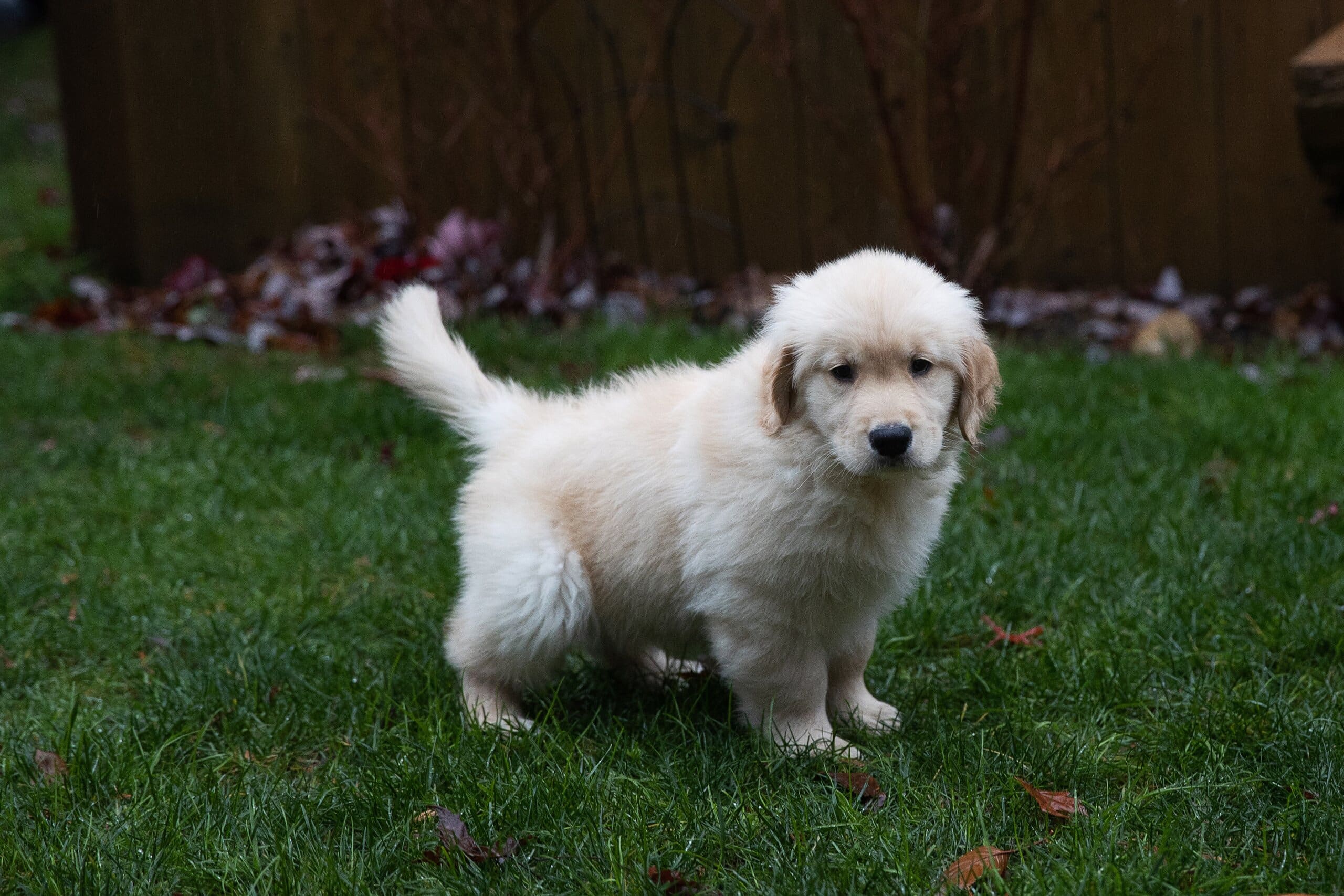
Are there any things I should avoid when training my puppy to sleep?
While the tips we’ve mentioned above are crucial considerations to bear in mind when training your puppy to sleep through the night, it’s also important to think about the following few points to ensure your puppy’s sleep training goes as smoothly as possible and that no bad habits are reinforced:
- If your puppy does start crying in the night, you mustn’t immediately respond to them. Although being alone can be distressing for both of you, instant attention may teach your puppy that barking or crying without reason is a quick way to get attention from you – a bad habit that you don’t want to normalise.
- Whatever you do, do not use your dog’s bed as a punishment area. This may cause them to associate going to bed with something bad and make it much harder for them to settle down when night rolls around.
- Above all else, be as consistent with your dog’s bedtime routine as possible. By doing this, they will naturally get sleepy at the same time each day, making it far easier for you to settle them down.
How long will it take to form a puppy sleep schedule?
All puppies need an adjustment period until they’re comfortable in their new surroundings, as well as being old enough for proper bladder strength to develop. This means you’re going to be in for an inconsistent few weeks of sleep no matter how much effort you put into your puppy sleep training routine.
But the good news is that, the sooner you implement the above tips, the faster and more effective your training will be!
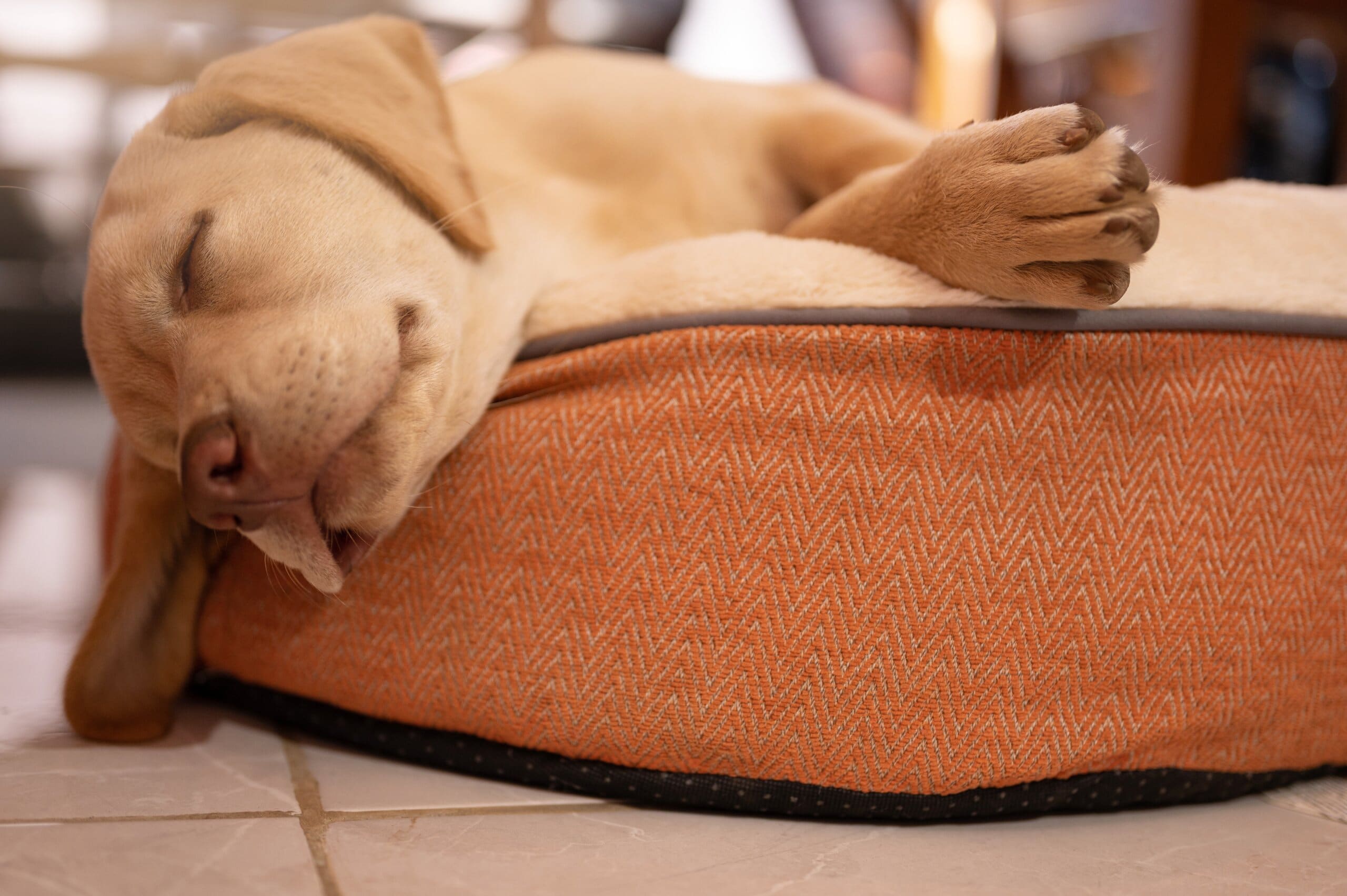
More animal-friendly sleep tips from MattressNextDay
We've also got plenty of other tips to help throughout your newfound dog parenthood, including how to cool your dog down at night and how to make a pet-friendly home.
Once you have all the information you need to ensure that your puppy gets the best sleep possible once they’ve moved in, you can focus on getting the best night's sleep yourself.
And while we can’t guarantee that you’ll get a full night’s sleep as you train your puppy to settle, we help make sure the sleep you do get is as restful as possible with our range of top-tier memory foam mattresses and comfy mattress toppers.






